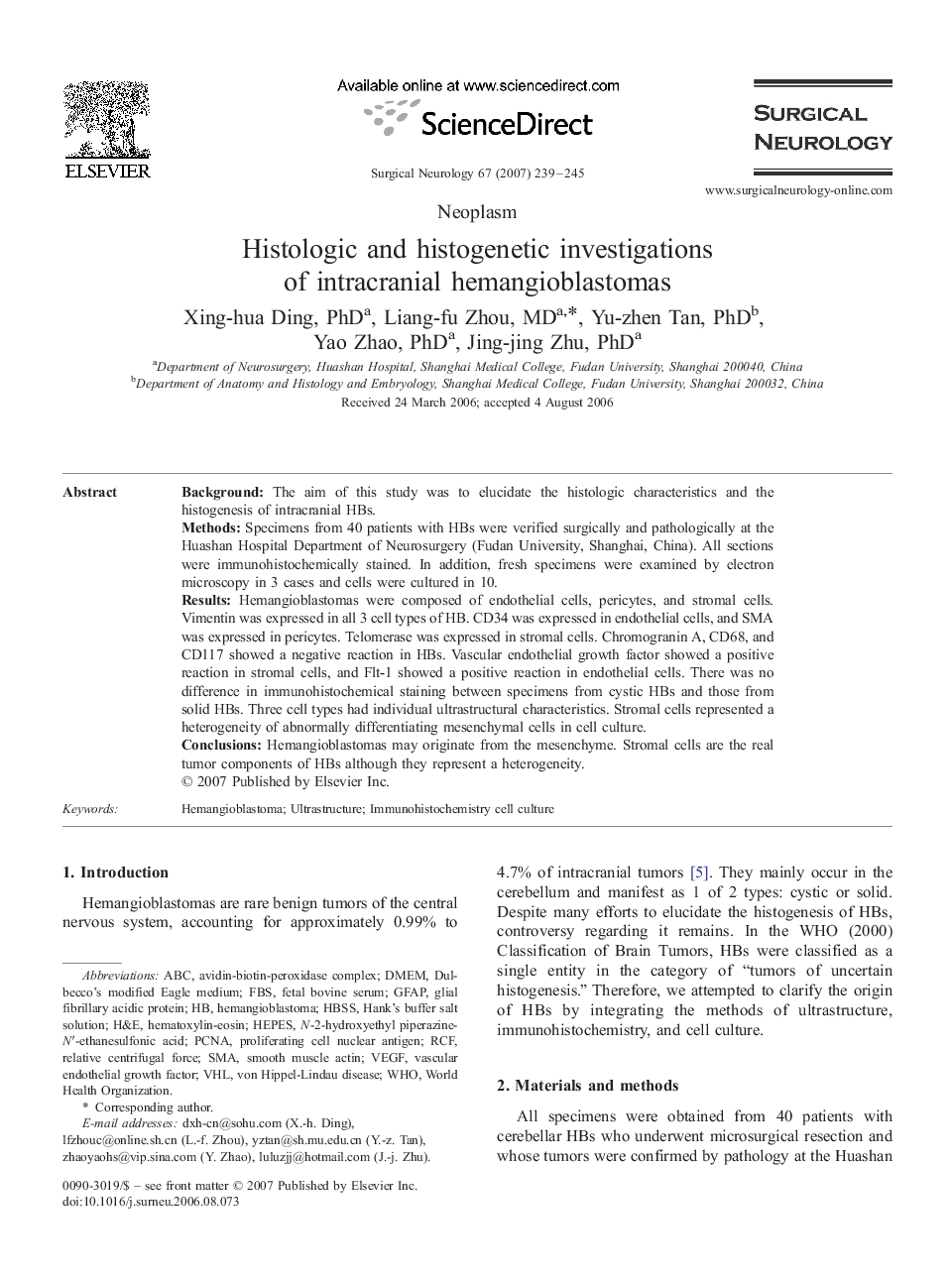| Article ID | Journal | Published Year | Pages | File Type |
|---|---|---|---|---|
| 3093808 | Surgical Neurology | 2007 | 7 Pages |
BackgroundThe aim of this study was to elucidate the histologic characteristics and the histogenesis of intracranial HBs.MethodsSpecimens from 40 patients with HBs were verified surgically and pathologically at the Huashan Hospital Department of Neurosurgery (Fudan University, Shanghai, China). All sections were immunohistochemically stained. In addition, fresh specimens were examined by electron microscopy in 3 cases and cells were cultured in 10.ResultsHemangioblastomas were composed of endothelial cells, pericytes, and stromal cells. Vimentin was expressed in all 3 cell types of HB. CD34 was expressed in endothelial cells, and SMA was expressed in pericytes. Telomerase was expressed in stromal cells. Chromogranin A, CD68, and CD117 showed a negative reaction in HBs. Vascular endothelial growth factor showed a positive reaction in stromal cells, and Flt-1 showed a positive reaction in endothelial cells. There was no difference in immunohistochemical staining between specimens from cystic HBs and those from solid HBs. Three cell types had individual ultrastructural characteristics. Stromal cells represented a heterogeneity of abnormally differentiating mesenchymal cells in cell culture.ConclusionsHemangioblastomas may originate from the mesenchyme. Stromal cells are the real tumor components of HBs although they represent a heterogeneity.
